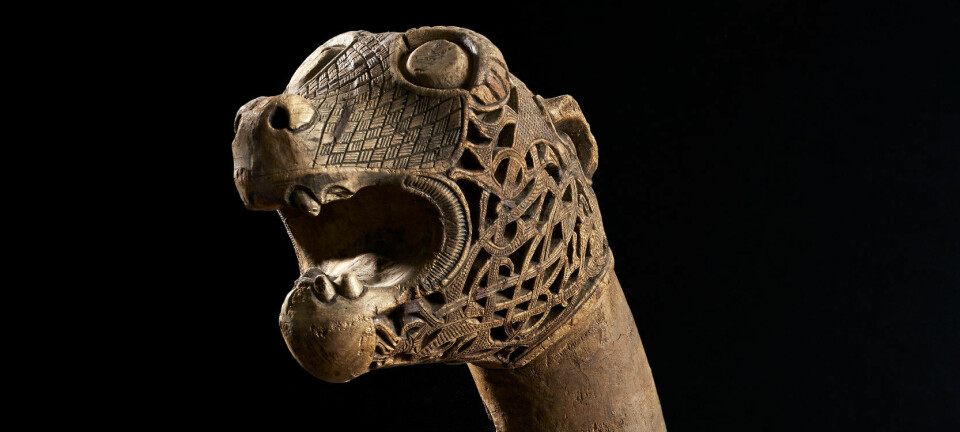
This brooch became high fashion during the late Viking and Middle Age
The number of Urnes style brooches found in Norway have more than doubled in the past decade, most likely due to an increase of metal detectorists.
Objects can often look a bit like lumps of dirt with something in them when brought into the conservation labs for further analysis.
Among a variety of finds from the excavation project ‘Intercity Sørli-Åkersvika’ in Stange in Eastern Norway, conservator Margrethe Felter didn’t have trouble distinguishing the type of jewellery she had just X-rayed.
“We could see straightaway the decorative shape of the Urnes brooch and possible gilding,” she writes in a post on the Facebook-page of the Museum of Cultural History in Oslo.
After radiography, the conservator can start removing the dirt.
“This is one of the most satisfying parts of being an archaeological conservator,” Felter writes.
“Especially when the object is as fabulous as this.”.
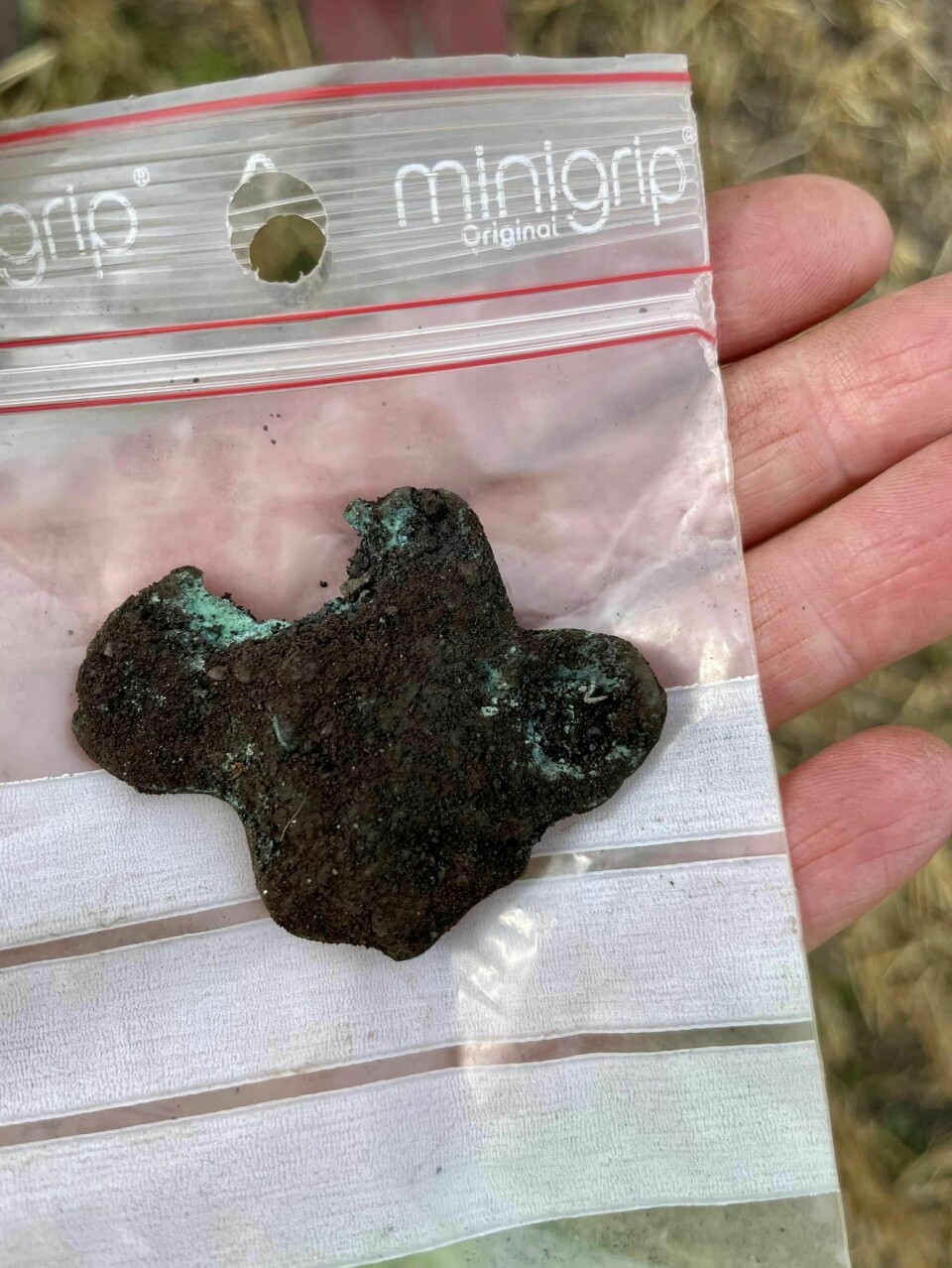
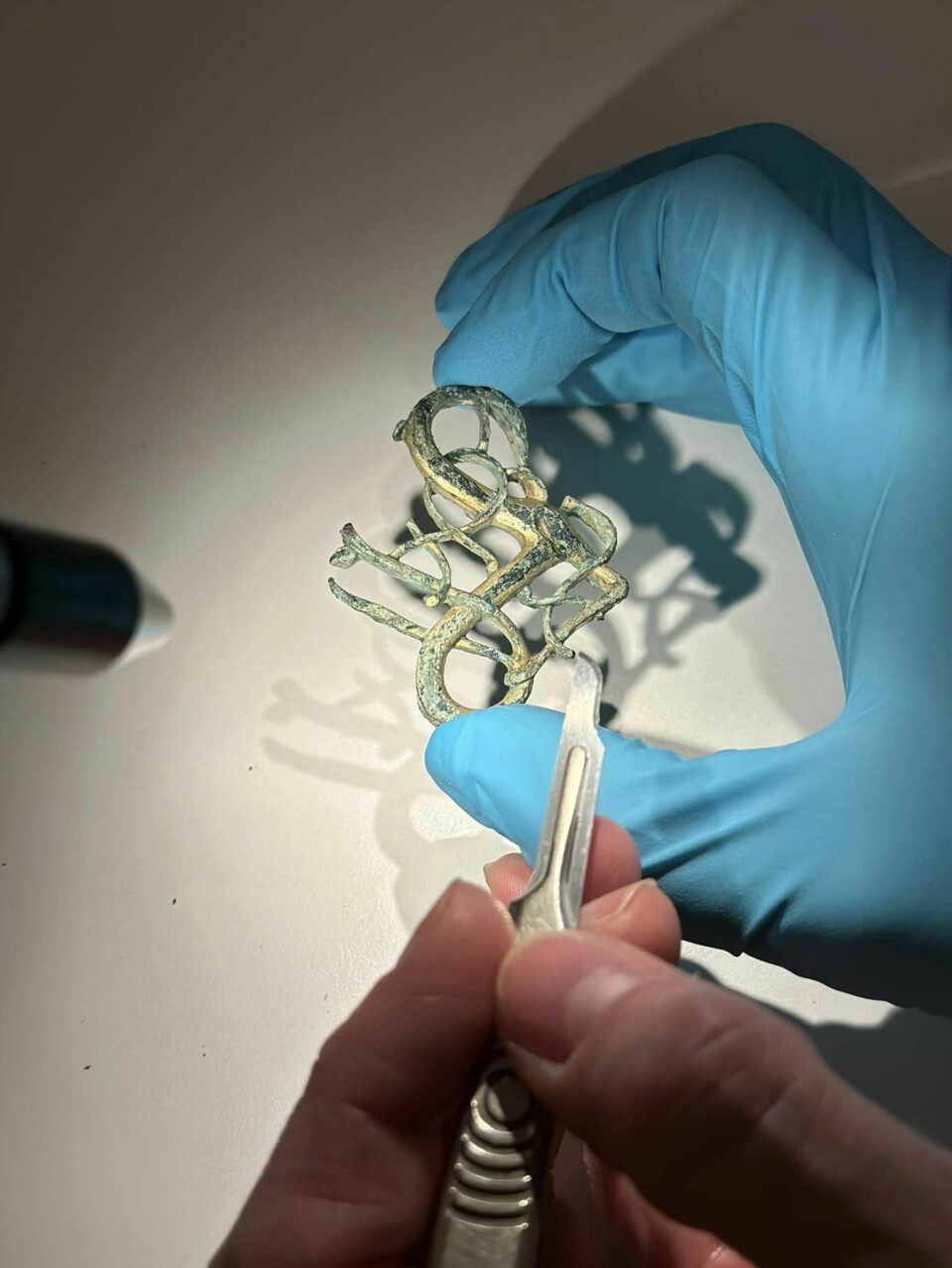
Mass produced animal fashion
The Urnes brooch got its name from the style of wood carvings of the Urnes stave church. The central motif is an animal figure with four legs, a long slim neck and a bent head. The animal has almond- or tearshaped eyes and is surrounded by figure of eight loops.
Researchers have suggested the animal could be a lion surrounded by serpent-like creatures, a horse, or a dragon, as some of the later styles depict animals with wings.
This animal style in jewellery was hot stuff toward the end of the Viking Age, during the transitional period from Old Norse to Christian faith.
“Finds of identical brooches show us that they were mass produced from the same source, a clay mould, and some of them were then gilded,” archaeologist and project leader Jessica McGraw from the Museum of Cultural History in Oslo writes in another post about the Urnes brooch.
Fragments of one such clay mould was found during excavations in the 1970s in Trondheim in mid-Norway, showing the production of exactly the same type of brooch that was found recently in Stange.
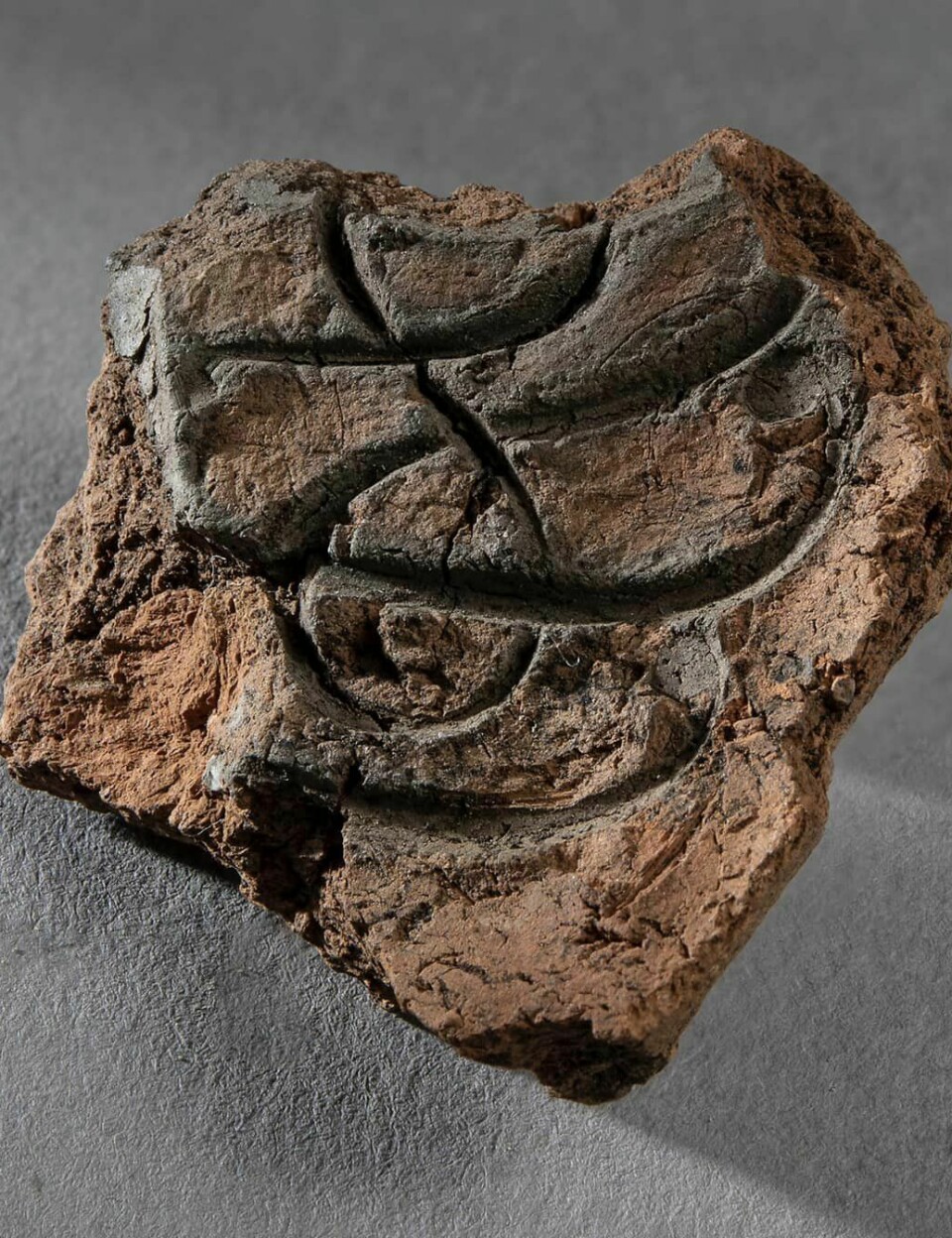

Lost and found some 1000 years later
The researchers don’t know if Urnes brooches were worn by men or women, or perhaps both.
“These brooches become popular during a time when burial practices are changing. The custom of grave-goods disappear during the Christianization. The Urnes brooches, belonging to the transitional period, are not found in graves, which is why we know very little about the people who wore them,” McGraw tells sciencenorway.no.
Brooches were a part of everyday use during the Viking age for both genders, worn both for decoration and to keep clothes and cloaks in place.
The Urnes brooch pictured here was found in the topsoil. During the Viking and Middle age, people would sometimes hide their valuables for safekeeping, or deposit them as offers to the gods. In this case however, no other similar items were found nearby. The archaeologists therefore believe that somebody may have simply lost it here.
Underneath the topsoil during the excavations at the two farmssteads Næsten and Guåker in Stange, the archaeologists found traces of settlements dating back 4000 years.
“The brooch might well have belonged to one of the people who ran the large and important farm here during the early Middle Ages,” McGraw suggests.
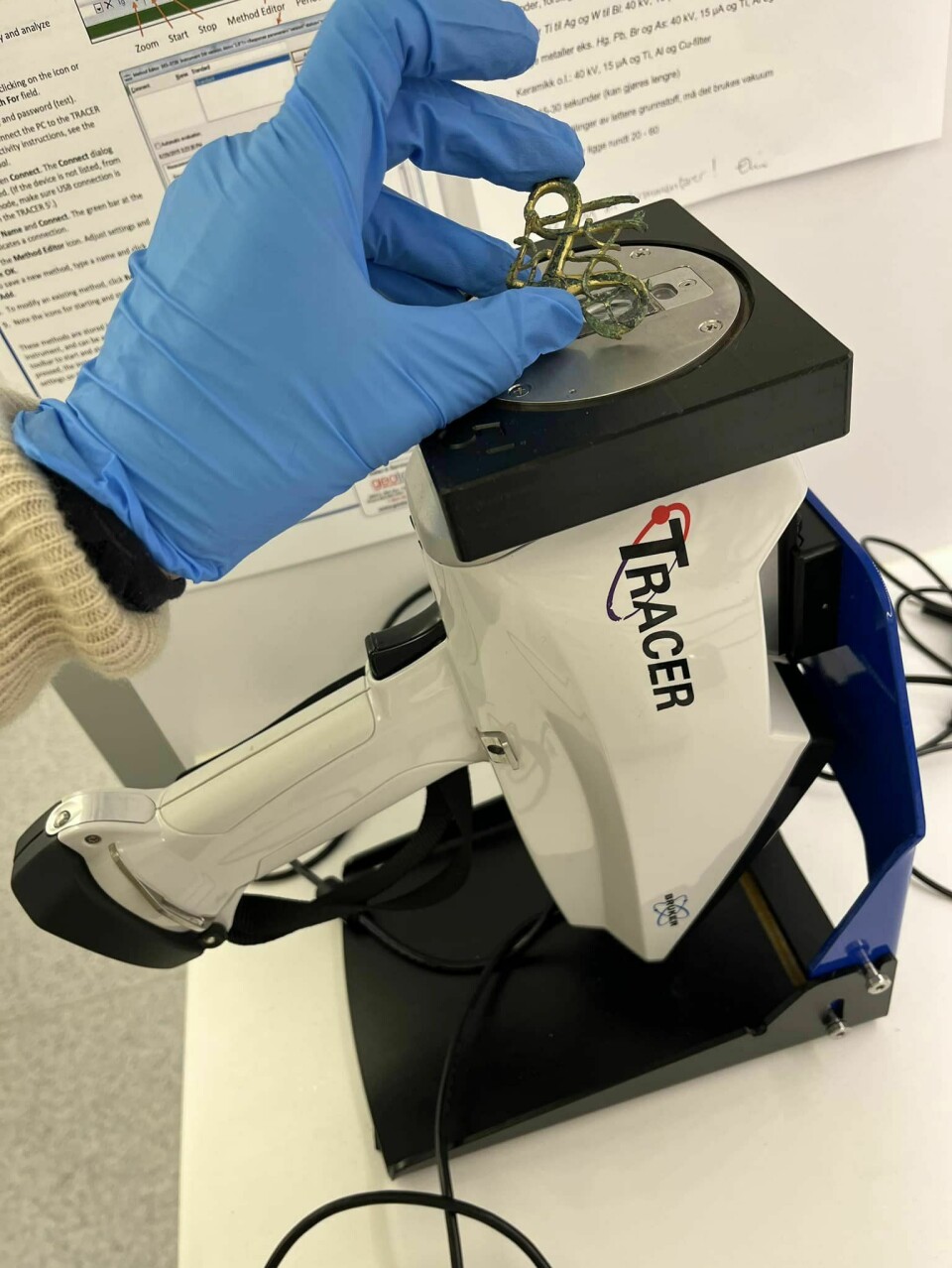

Doubled by detector
In a scientific article (link in Norwegian) about Urnes brooches in the journal Viking from 2012, archaeologist Ingunn Marit Røstad writes that the finds of such brooches are most prevalent in Denmark.
In 1968, eight such brooches had been found in Denmark. By 1994 however, there were more than 100.
This volume has also allowed researchers to group the finds into different styles of the Urnes brooch, which it turns out comes in variations.
In Norway the number of finds in 2012 was around 27.
“Since then, we’ve had a great many more finds,” McGraw says.
“We don’t know the exact figure, but it has at least doubled, if not tripled since then, much due to an increase in metal detecting. However, often what we find are just fragments of the brooches,” she says.
In fact there are probably more than 100 finds of Urnes brooches in Norway by now, according to the archaeologist.
“This brooch is thus not a unique find, but it’s a wonderful example of a type of Urnes brooch that we don’t have too many of in our collections at the museum,” McGraw says.
------
This article was updated on 27 April at 15:30 to change the number of Urnes brooches from 50-80 to more than 100.












